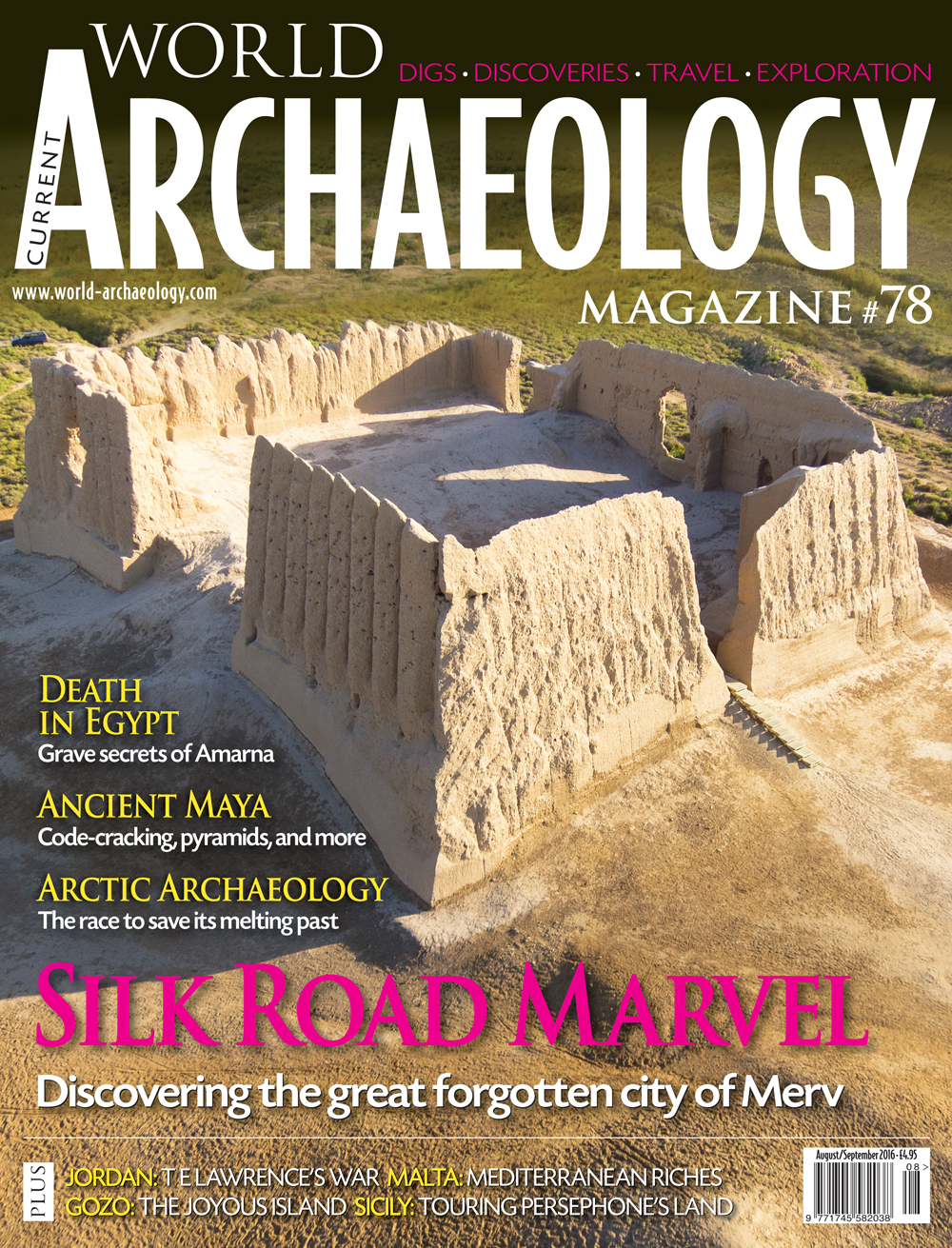In February 1221, the Mongols unleashed one of the most devastating attacks on the medieval world. Led by Genghis Khan’s son, Tolui, they sacked the great Silk Route city of Merv, in modern-day Turkmenistan, laying waste to anything they could not carry away, and slaughtering tens of thousands. As one contemporary author put it, this was a ‘great disaster, the like of which neither day or night had brought forth before’. Yet in wiping Merv from history, its attackers unwittingly preserved it for archaeology. Site-director Tim Williams takes us deep into the once-mighty site to tell its story and reveal the latest discoveries.
Egypt’s Amarna is a city that was also unwittingly preserved, almost as a ‘time capsule’. Founded in the 1340s BC in honour of the sun god by the ‘heretic’ king Akhenaten (husband of Nefertiti and possible father of Tutankhamen), it was promptly abandoned shortly after his death, and is today the best survival of an ancient Egyptian settlement. But what was life like for Akhenaten’s people? With two non-elite cemeteries under excavation, the results are often shocking.
Thereafter, archaeological treasures tumble forth in our feature on the Maya. It is 50 years since the great Maya scholar Michael Coe released his now-classic introduction to this culture. In the intervening time, huge advances have been made including the cracking of their code, and the scanning of vast areas, as David Miles explores.
From the heat of Mesoamerica, we plunge into the Arctic. As global temperatures and sea levels rise, its previously deep-frozen archaeology is under threat. The race is on to record and save its melting history, as David Millar explains.
Our last feature concerns an almost invisible sort of archaeology. Turn to p.44 to read about the conclusion of the CWA-backed Great Arab Revolt Project. Finally, the travel section takes us to the Mediterranean delights of Malta, Gozo, and Sicily. Good reading!

